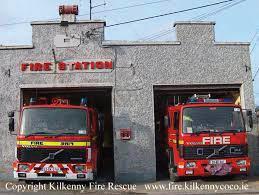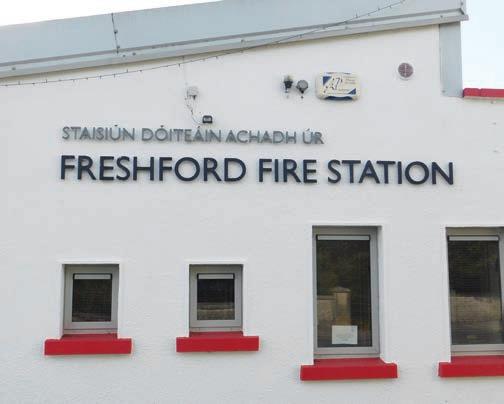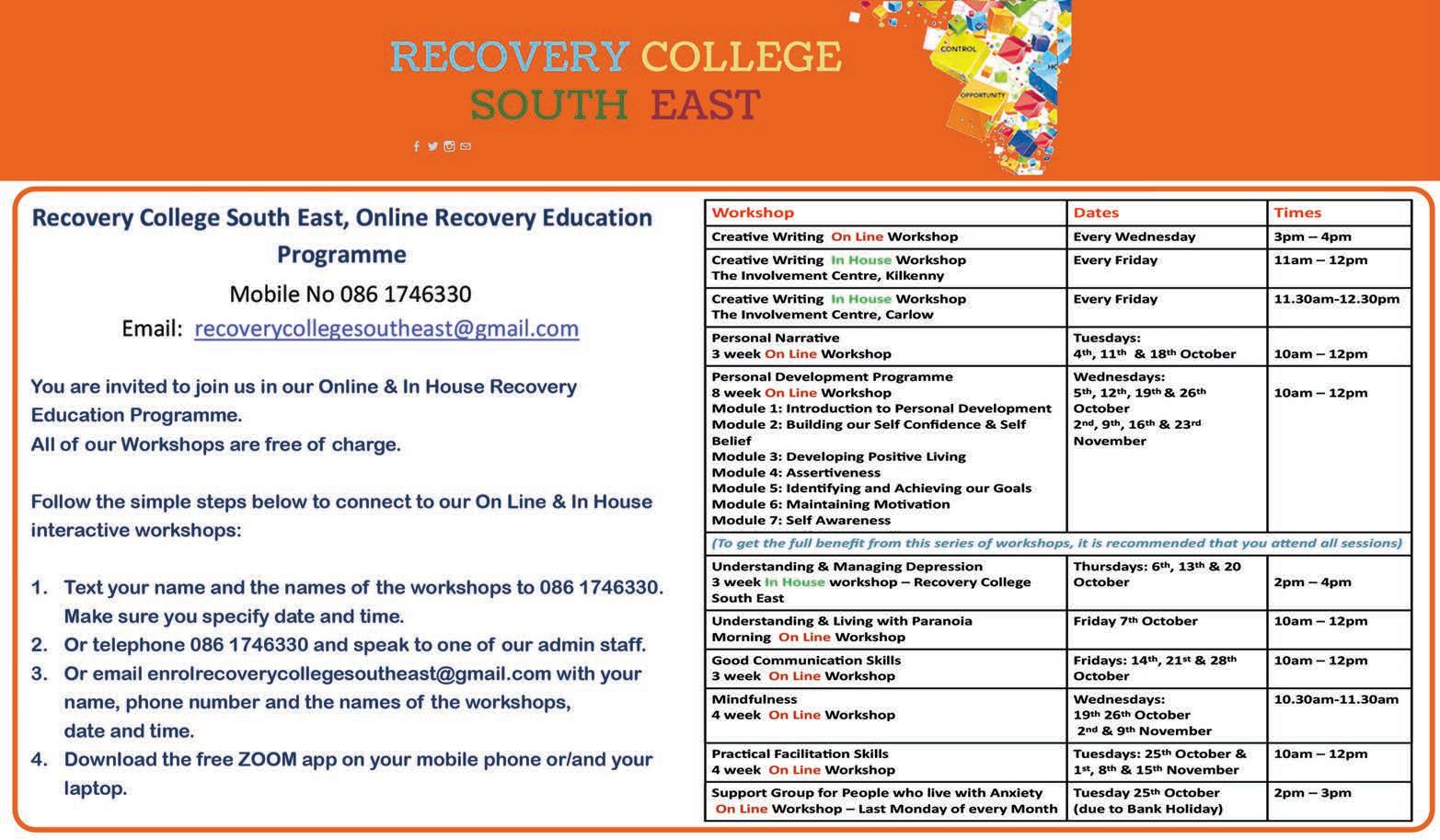
49 minute read
Gerry Moran
Furthermore

Advertisement


Gerry Moran Kilkenny – the town I love so well ...
Sunday, October 9 is Kilkenny Day – a day when we celebrate who we are, and what we are. I love Kilkenny. Love this city of ours and feel privileged to live here. And so, this week I am presenting a few tidbits about the town I love so well.
Tidy Town
Kilkenny has won its fair share of honours when it comes to the Tidy Towns Competition thanks to the Keep Kilkenny Beautiful folk who do such Trojan work in keeping our city tidy. Following is how the authorities kept Kilkenny tidy 700 years ago. This is taken from the Liber Primus (Latin for First Book) the oldest record of events and happenings in Kilkenny: “On Friday next after the feast of St Michael the Archangel (October 6, 1335) it was ordained and provided by Gilbert Fort, sovereign of the town of Kilkenny, and the community of that town, that everyone should cleanse the pavement against his house, and this twice a week, that is on Wednesday and on Saturday, and unless he do so he shall be charged 6d (six pennies), 3d. on Wednesday and 3d. on Saturday.
“It was also ordained and provided by John Cros, sovereign of Kilkenny and the community of that town, that if anyone be found washing clothing or the intestines of animals or anything else in the fountains of the said town they shall be forfeited and if anyone be found committing any other enormity in the said fountains they shall be put in the tumbrel (in this case a cart-load of dung for the dump).”
Daylight robbery! Paying tax has never been pleasant for people throughout all ages. In Alice Kyteler’s time (early 1300s) there was a tax on windows that let in daylight, hence the phrase “daylight robbery”. The blocked up windows in Kyteler’s Inn, which can still be seen today were a medieval means of avoiding tax. Staying with Alice Kyteler — Kilkenny was very much a Norman French town and French was very much the language of its citizens. During the Alice Kyteler witchcraft trial in 1324, Bishop de Ledrede, who brought the charge of witchcraft against Alice, found it necessary to defend his actions in French.
The inn thing!
In the old days, travellers, rich and poor, were fed and sheltered, free of charge, in the abbeys and monasteries. When numbers became too great to cater for, inns were established close to the monasteries where the travellers were entertained without payment. These inns often had the sign “Bull” outside. The word Bull in this case comes from the Latin “Bulla” meaning seal, indicating that the inn was licensed under the seal of the abbey or monastery. The Bull Inn, very close to St Francis Abbey, was such a house of hospitality attached to the abbey. It gave its name to the street where it stood, known as Bull Alley up to 1883 when it was widened and its name was changed to St Canice’s Place. Prior to its widening, Bull Alley was so narrow that people could almost shake hands across it.
The Lighthouse Bar
I often wondered how the Lighthouse Bar (which was in Walkin St and where I had the occasional pint) got its name especially as Kilkenny is an inland city with not a seashore in sight! Well let me throw some light on it – the pub was one of the old landmarks in Kilkenny, its history dating back 300 years.
In the old coach days, this particular part of Upper Walkin St was used as a signal station for the mail coaches. There was always a light kept outside; when the mail coach reached a certain point on the Dublin Road, the light could be seen and so it came to be known as “The Lighthouse”.
Byrne’s Coach Factory
Where in Kilkenny will you find Byrne’s Coach Factory? I’m ashamed to say that I only spotted it last year during one of my Covid walks around town even though I’ve been driving past it for years (and years and years!). I t was quite a busy place if the following add is anything to go by: ‘John Byrne’s Coach Factory, vehicles of every description, including Carriages, Waggonettes, Stanhopes and Jaunting Cars are manufactured in the newest styles, the best material only being used. Repairs executed at moderate charges.’ And you’ll find Byrne’s Coach Factory in Upper Patrick Street just across from Chapel Avenue.
In the meantime – happy Kilkenny Day. Celebrate and enjoy

Kilkenny Day 2022 next Sunday
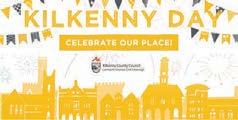
Kilkenny Day is a celebration of all things Kilkenny, bringing the communities of Kilkenny City & County together to have fun, laugh, dance, connect and remember everything that makes Kilkenny a very special place to be!
Kilkenny Day takes place this year on October 9th with much of the city-based entertainment focusing on Canal area in the heart of the city. Kicking o at 1pm and continuing until 6pm, this will be a jampacked free family fun day, with entertainment for everyone. Crowds will be greeted with a live performance by Maracatu Ilha Brilhante, a Brazilian percussion band. Starting at the historic bandstand along the Canal Walk, people can interact with the animals from Nore Valley’s Pet Farm, watch Monsieur Gusto’s family performance, marvel at stilt-walkers & jugglers entertainment and enjoy interactive plate spinning, traditional family games such as hook-aduck and take a spin on some amusements, while snacking on popcorn and candy oss as they stroll around.
A few minutes’ walk away, there will be a live performance from the incredible Code of Behaviour, an Irish brass band, at 2pm on Canal Square. With a mix of pop, jazz and other genres, Code of Behaviour are known for getting their audiences up and dancing. We can’t wait for people to experience this exceptional group, along with many others at the bandstand on Canal Square. e other groups, including will perform on the day with the support of the Live Local Public Performance Scheme, funded by Minister Catherine Martin’s Department of Tourism, Culture, Arts, Gaeltacht, Sport and Media.
Kilkenny Day was created to celebrate the memory of St Canice, a 6th century monk who founded Kilkenny city. His memory is celebrated in the beautiful St Canice’s Cathedral & Round Tower. e medieval city is lled with astounding beauty; in its historic gardens, traditional and contemporary design, fantastic restaurants, bars and boutiques, all within walking distance of each other. is year will feature a memorable moment for Kilkenny as a very special sculpture, featuring Adam King’s legendary, ‘Virtual Hug’ will be unveiled by Adam and special guest, Paralympian Mary Fitzgerald. e public will be led along the Canal Walk by Adam’s dance group for the unveiling at 3pm on the day. is permanent feature will serve as a reminder of how the people of the city and county stayed strong and connected during di cult times and will provide a place to re ect and contemplate.
To celebrate the county on Kilkenny Day 2022, many historical sites and fun experiences will open their doors free-of-charge for all to explore and enjoy on the day. In people’s busy lives they can miss some of the wonderful sites and experiences on their doorstep. Kilkenny Day o ers the chance to explore their own county and take a tour around Kilkenny Castle, visit the Coal Mining Museum in Castlecomer’s Discovery Park or walk in nature with the scenic views at Woodstock in Inistioge. For Information and a list of the free sites on the day can be found on visitkilkenny.ie
People are asked to dress up in their black and amber, to get out and enjoy the day and make some lasting memories in their local city and county towns!

Arán Bakery & Bistro named ‘Supreme Champions’ at Blas na hÉireann Awards

Arán Bakery and Bistro won Supreme Champion of the Blas na hÉireann 2022 awards after winning Gold for their Spelt Sourdough bread, which won Gold for the second year in a row. Sweeping the Sourdough category, Arán also won the Bronze with their Heritage Sourdough and Silver with their Multi-Seed Sourdough. Arán won Gold in the PastriesTart category with their Citrus Tart, and Best in County for Kilkenny. Hailed as being the Irish seal of approval, Blas na hÉireann celebrates the very best in Irish food and drink, shining a spotlight on the talented producers dotted around the island.
Bart Pawlukojc said: “We have a huge amount of gratitude to the customers. We try, from the heart, to bring the best quality to them. To be recognised like this is wonderful. We are grateful to our team and our suppliers in Kilkenny and further a eld who made this possible. It is an honour to be recognised along with all the candidates.”
Nicole Server-Pawlukojc said: “ at loaf of bread epitomises our entire approach
at Arán — start with won Supreme Cham the very best and then add a little love and skill. 2022 awards We couldn’t be more delighted for the whole team — it’s a real boost for everyone.” Arán Bakery and Bistro, Gold for the Barrack Street, second year Kilkenny, was founded in a row. Sweep- in 2019 by Bart Pawlukojc ing the Sourdough and Nicole Server-Pawlukojc who met while working in the world famous Noma in Copenhagen. ey fell in love and became happily married. Arán is Nicole and Bart’s creative outlet that allows them to make top-quality food accessible to everyone. Focusing on local, seasonal food, they work with producers from Kilkenny and Carlow to bring a delicious menu that can change from day to day. For the past 3 years, Arán has adapted to challenges with creativity and attention to their consumer needs. is led them to open a second location just last year which houses their bakery and deli, and o ers take away
and our suppliers in Kilkenny and further a eld who at Arán — start with the very best and then add a little Kilkenny, was founded
sweet and savoury baked goods. Now in their 15th year, Blas na hÉireann, Irish produce on the island of Ireland. is year, over 3,000 products from every county on

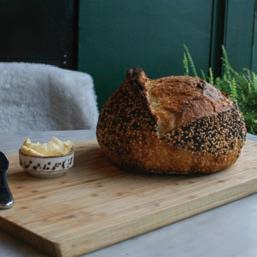

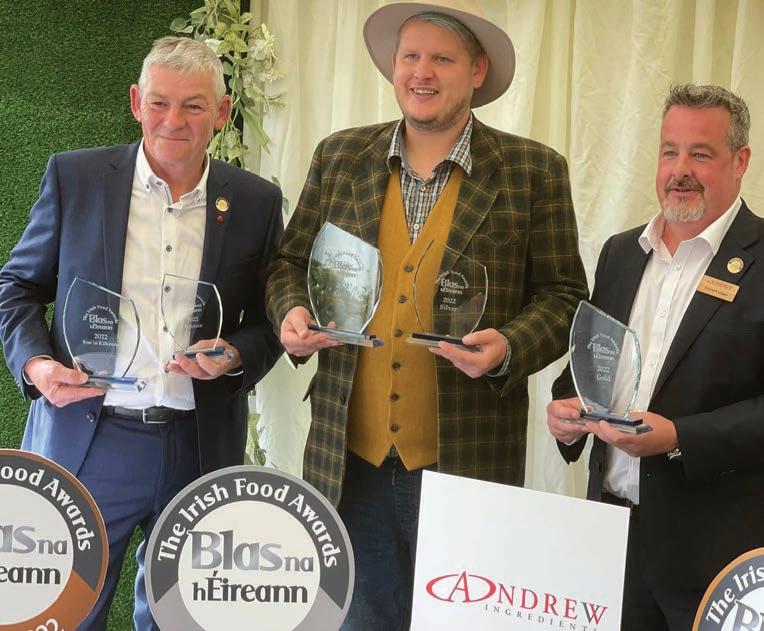
sweet and savoury baked goods. Now in their 15th year, Blas na hÉireann, the Irish Food Awards is the biggest competition for quality Irish produce on the island of Ireland. is year, over 3,000 products from every county on Ireland were entered into the competition to win Gold, Silver and Bronze Awards in a broad range of food and drink categories as well as key awards such as Supreme Champion and Best Artisan Producer.
Arán Bakery and Bistro continues to o er their award winning bread and pastries, and brunch 5 days a week. From ursday 6th October,
Arán will be opening in the evening for ‘à la carte’ dining. Every ursday in October there will be live Jazz with Indigo Mood. e menu is available for sit in dining, take away and delivery. Book a table by contacting (056) 775 6297.
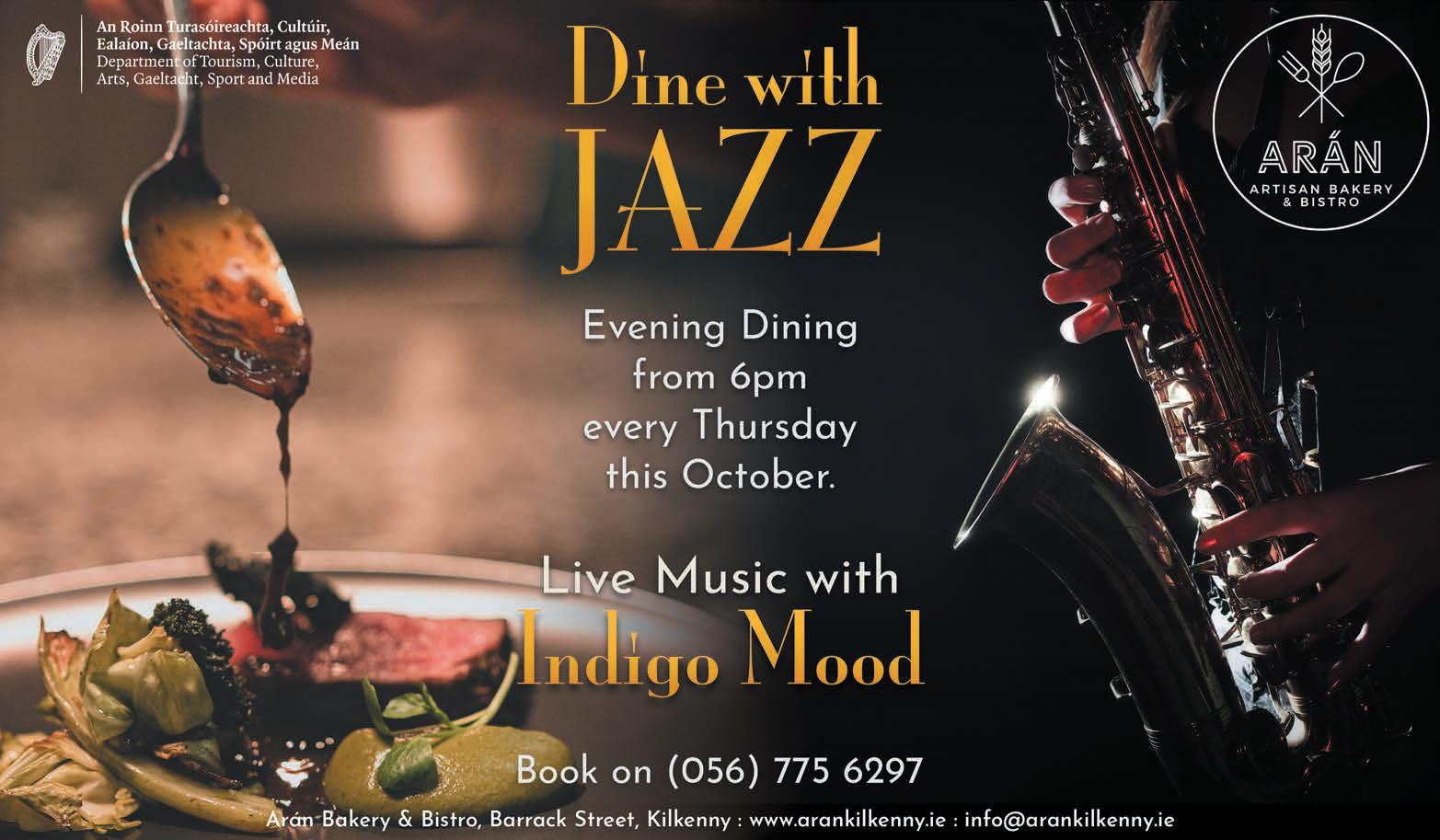

So, Russian President Vladimir Putin has now said he is willing to negotiate with Ukraine. at might sound good, but it is imperative to pay attention to the details. He made the statement right after he announced the illegal annexation of regions of Ukraine that are (at least partly) occupied by Russian troops. So in e ect he was saying: “I’ve invaded your country. I’ve killed tens of thousands of your people, created millions of refugees, caused many billions of dollars’ worth of damage, and now I am trying to steal your land. So let’s negotiate.”
Ukrainian President Volodymyr Zelensky also made a statement about negotiations with Russia. Ukraine, he said, was ready “to agree on coexistence on equal, honest, digni ed, and fair terms”. He also made it clear that no talks about peace were possible with Putin: “We are ready for a dialogue with Russia, but with another president of Russia.”
In case that wasn’t clear enough, he announced another decision: Ukraine is speeding up its plans to join NATO.
Presidential adviser Mykhailo Podolyak is often described as one of the most powerful people in Ukraine, not far behind the president himself.
As Podolyak has repeatedly pointed out it’s a myth — often asserted by the Russians — that Ukraine isn’t ready for talks. In fact, Podolyak already has experience of sitting at a table opposite a delegation from Moscow. In February, he was part of the Ukrainian negotiation team that met with Russian representatives at the border with Belarus just as the war was getting underway. e Russian negotiators, fully believing their own propaganda, issued ultimatums to “demilitarise” and “denazify” Ukraine.
“ ey kept calling us ‘Nazis,’ ” says Mykhailo Podolyak. “It shows you how degraded Russian diplomacy and consequently the political process is.” Even some of the members of the Russian delegation Podolyak has known for years referred to him with this label. e Ukrainian delegation came with a mandate to do everything it could to start a dialogue. At the time, Russia was killing countless Ukrainian citizens and destroying Ukrainian cities; Ukraine had prevented the Russian troops from taking the capital but had not yet fully driven them out of the area to the north of Kyiv. e Kremlin demanded that Ukrainians lay down their arms and surrender. “ ey were completely unprepared,” Podolyak recalls. “ e Russians knew nothing about the state of our army. ey described some of our bases, which are exclusively under Ukrainian jurisdiction, as NATO bases. ... e only thing they had to o er was war and blackmail.” e last round of talks, held in Turkey at the end of March, ended with the Ukrainians handing over a communique with a proposal to end the war. e Ukrainian delegation presented a proposal for a new system of security guarantees that would de ne Ukraine’s status as a neutral nonaligned nonnuclear state. Ukraine o ered to negotiate the status of Crimea separately within 15 years, without the use of military means. Separately, the presidents of Ukraine and Russia would discuss the status of Donetsk and Luhansk regions. e Russians responded by saying that they would give Ukraine a gift “that would please them very much.” at meant, Podolyak said, “that they would withdraw their troops from Kyiv region.” (By then, of course, Ukrainian ghters had already defeated the Russian forces marching on Kyiv.)
But what the Ukrainians discovered after the withdrawal lled them with horror. In Bucha, investigators discovered the bodies of more than 400 civilians — their hands often tied behind their backs — who were shot by the Russian invaders. ere is evidence of torture and rape. Hundreds remain missing. What the Ukrainians saw was shocking in its brutality, this “not only canceled out the Istanbul communique but also our understanding of what Russia is.”
I asked what he meant by this: “We saw that the Russian army wasn’t just ghting, it was destroying,” Podolyak told me. “And they were doing it on the principle of genocide — not on the basis of ethnicity but of a liation with the Ukrainian state. As if it didn’t matter who you were ethnically, what language you spoke, they would kill because you were a citizen of Ukraine.”
Even after visiting the site of the massacres on April 4, Zelensky still con rmed his readiness to negotiate: “We strive for peace, we deserve it. And these people showed it, and the Armed Forces showed it. Peace is impossible without victory.” And yet, he added: “We do not want to lose millions of people. at is why there should be dialogue.”
Now Putin declares his willingness to discuss peace even as he declares mobilisation, annexes Ukrainian territory and threatens the use of nuclear weapons against those who would resist his seizure of Ukrainian land. And Ukrainians are still prepared to negotiate. If the Kremlin wants talks, it should start by withdrawing its troops. Nothing is preventing it from doing that.
Meanwhile, the Biden Administration has announced a new round of sanctions on Russia, in response to the annexations, targeting government o cials and family members, Russian and Belarusian military o cials and defence procurement networks.
Finally, Putin recently declared a military mobilisation to call up as many as 300,000 reservists in a dramatic bid to reverse setbacks in his war on Ukraine. e announcement led to an exodus of more than 180,000 people, mostly men who were subject to service, and has led to renewed protests and acts of de ance against the war.
Now, Putin says he wants to negotiate

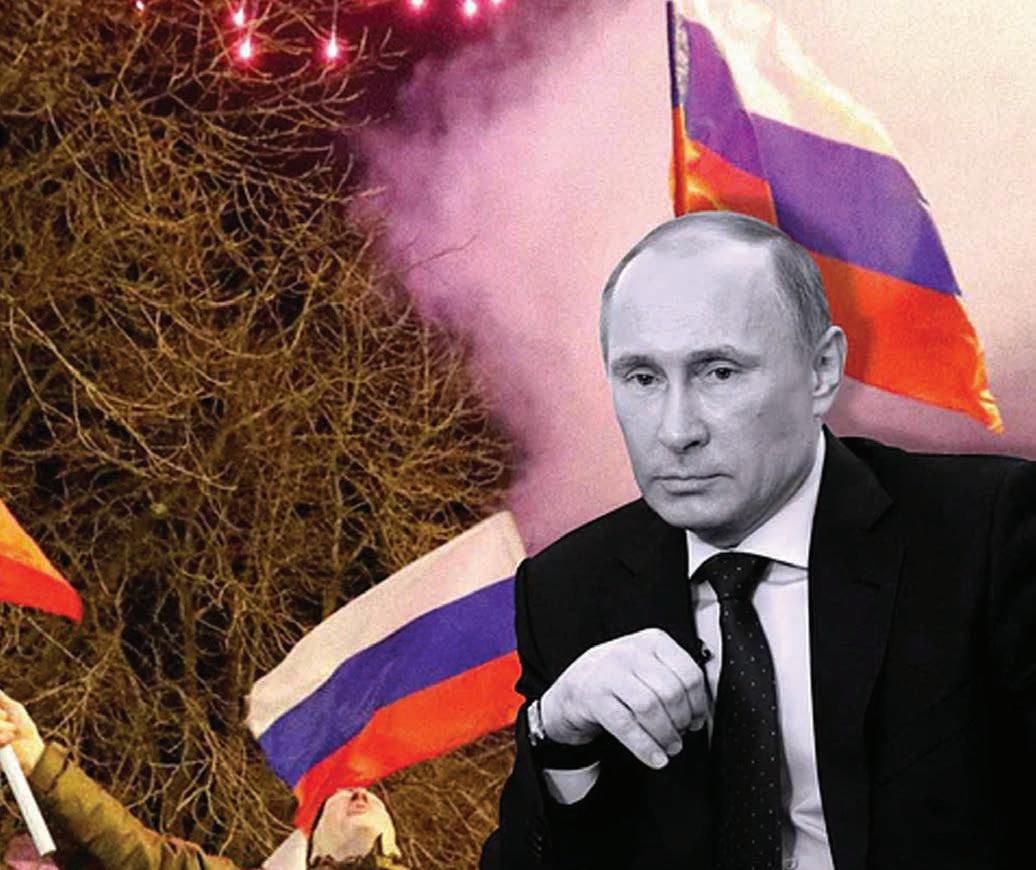
What you need to know about the Nobel prize
October means Nobel Prize season. As you read this, six prizes will have been announced from around the globe, leading to some new faces being added to the world’s most elite roster of scientists, writers, economists and human rights leaders. e prizes are for medicine, physics, chemistry, literature, economics and the much coveted Nobel Peace Prize.
Who created the Nobel prizes?
e prizes in medicine, physics, chemistry, literature and peace were established by the will of Alfred Nobel, a wealthy Swedish industrialist and inventor of dynamite. e rst awards were handed out in 1901, ve years after Nobel’s death.
Each prize is worth 10 million kronor (nearly €900,000) and will be handed out with a diploma and gold medal on December 10 – the date of Nobel’s death in 1896. e economics award – of cially known as the Bank of Sweden Prize in Economic Sciences in Memory of Alfred Nobel – was not created by Nobel, but by Sweden’s Central Bank in 1968.
Between 1901 and 2021, the Nobel prizes and the prize in economic sciences have been awarded 609 times.
Who knows who will win and why?
e Nobel statutes prohibit the judges from discussing their deliberations for 50 years. So it is probably going to be a while before we know for sure how judges made their picks for 2022 and who was on their shortlists. e judges try hard to avoid dropping hints about the winners before the announcements, but sometimes word gets out. Bookies in Europe sometimes o er odds on possible peace prize and literature Nobel winners.
Who can nominate a candidate?
ousands of people around the world are eligible to submit nominations for the Nobel prizes. ey include university professors, lawmakers, previous Nobel laureates and the committee members themselves.
Although the nominations are kept secret for 50 years, those who submit them sometimes announce their suggestions publicly, particularly for the Nobel Peace Prize.
What about Norway’s connection?
e Nobel Peace Prize is presented in Norway while the other awards are handed out in Sweden. at is how Alfred Nobel wanted it.
His exact reasons are unclear but during his lifetime Sweden and Norway were joined in a union, which was dissolved in 1905. Sometimes relations have been tense between the Nobel Foundation in Stockholm, which manages the prize money, and the ercely independent peace prize committee in Oslo. recognised by the Nobel judges, who want to make sure that any breakthrough withstands the test of time. at is a departure from Nobel’s will, which states that the awards should endow “those who, during the preceding year, shall have conferred the greatest bene t to mankind”. e peace prize committee is the only one that regularly rewards achievements made in the previous year.
According to Nobel’s wishes, that prize should go to “the person who shall have done the most or the best work for fraternity between nations, for the abolition or reduction of standing armies and for the holding and promotion of peace congresses”.

The Worshipping of Helena
It was springtime, back in the far days when you noticed such things. When every dawn gave the hope that the savage frost of the night before might be the last one of a hard pitiless winter. And maybe this day would see the snow start its long slow retreat back up Slievenamon, which loomed, white and clear and Arctic, in our back-window, in the blue light of a late January evening.
In those 1940s days, cold was the blueprint – the template – of our dirt-poor lives, and every winters grasp was bitter and iron hard. e bed at night now had the maximum amount of beet sacks on it: {blankets were something we’d read about in schoolbooks.} Any more sacks and the weight would break our bones; what brainiacs might now call ‘critical mass.’ e small bedroom window glass was cloudy-yellow with ice; just a milky spot left in the middle, which hadn’t quite yet been covered. Yet, I said. And I’m talking about the inside. Our house was a barn with a greenstick feeble re in one corner.
Later on in the evening, I’d be o on my usual mission. An obsession I’d only noticed when my voice deepened a bit, and body foliage was discovered sprouting in unlikely and hitherto barren spaces. I was a bit more than twelve, can’t be sure how much, maybe a year or two.. e ancient biological scene had crept up on me, somehow, without attracting much of my attention. No one to tell me anything of the body, of course. Same as the girls, who had their own particular problems and misfortunes {which I knew naught of, at the time.} Aye, ‘our land of saints and scholars.’
It was all a bit of a mystery for me. Worse for them. Probably a sin, too. No, de nitely a sin. Every event south of the old belly-button {the ‘nable’ as we knew the ‘navel’} was tainted with the feral stink of Hell re. at, amongst other even less attractive personal aromas…
But the old terrorizing sinny angle didn’t bother me one little bit: I stopped believing in that craic when I was old enough to realise that if anyone who was any good at all lived beyond the clouds, they would sort out this old world a lot better. But they wouldn’t bother their arses coming down this way; ever. What for – for the luvva Jaysus? Getting on for thirteen or so might have been early or late to set out on the march to manliness – not that I knew what that meant - with all its pitfalls and odd pleasures. I found out, long after, that having a good time in this world had been far easier as a dirty hungry wandering loner of a child, than it was when I became very rich. Maybe that’s why I ‘ ewered’ it all away on several occasions. In the years I had it, I wasn’t happy. And whenever without it again, I certainly wasn’t much sadder.
Anyway, back to where I rambled away from – this obsession. Nearly all obsessions worthy of the name involve a female. And mine was no exception. e divine object was the daughter of a local business man, in the ‘drinks retail trade.’ Well, a pub – a ‘grocery pub’. …
Each evening I would walk down to the village - resisting the urge to run, run! I would love to race – gallop – tear – storm - into the small street - like a wild Don Cossack, or one of Genghis Khan’s raiders, all hairy, my horse a-snorting, turban and beard ying, lance glittering and blood-stained with gore! is, might attract favourable glances from the fair object of my {innocent} desire!! A bit extreme, I suppose; slightly over the top... But I read books, maybe believed the Cossack bits more than others might...
Anyway, on foot, in badly holed, over-sized and smelly Welly boots, I arrive when dark has fallen, giving me a good four or ve hours to hang about outside the shuttered pub windows, where-within shimmered and soft-shoe’d my rapturous one – my very own secret love – my unknowing love – my darling Dunna Mona Lisa. e closed shutters didn’t t ush, and there were many wide gaps at the centre divisions. rough these, I could see half of the lamp-lit bar - and my ‘intended.’ e special relationship was all in my mind, of course – but where else would it be? Ne’er a Parker fountain pen had I - the only instrument sophisticated enough to give appropriate dignity to any script addressed to my love. How could I pen a proper poem, or love words, to my casually indi erent dear, without such a necessary gadget? At the back of my mind, I knew the age di erence might be a prob. And not the only one, either. Her riches, beauty, ne clothes, and acceptance as the sweetest ‘belle’ of the area, were also hurdles in my path. But not insurmountable ones!! ‘ e course of love never runs smooth!’ So Clark Gable. a lad with a ne ‘tache - had assured us all, in a lm at Bill Egan’s Gaeity Cinema, for the princely sum of fourpence.. And who was I to naysay a lm star? Who’d know more than that girlcharming fella?
Oh, long wavy auburn { lm word} hair my love had, with the most winsome way of tossing it this way and that, and the sweetest little shy smile. An adorable and genuine smile – {not ‘put on’ like those of the other, lesser, local wans!} To my great anger, she bestowed her sweetness on everyone, old or young, rich or poor, even the omadhuns and lutherauns drinking at the bar! Cripes! Aaahh, but her voice was pure golden honey…. e grocery shop tied into the pub was a handy yoke. I’d sometimes scratch and scrape up a coupla pennies, enough to buy a few squares of Cleeres to ee, just to hear the loved voice intone, sweetly: “ anks, Nedda”…
She had this charming way of cutting words short, of putting a di erent intonation on them. Nobody else, in all of my derelict, strange, and often dangerous life, ever called me ‘Nedda’ with that same unique in ection. I’m glad they didn’t … I’d be running after them, too, maybe!
Faced with a few of the {aleady-mentioned} snags, I gured that if I made regular money, snaring and lamping rabbits, I’d have enough to make a move in her direction in about seven years’ time, when I’d be twenty or so. At the age I was, everyone from twenty to thirty was ‘grown up,’ and anyone over that was just old. Not nished – just old; and therefore completely out of the market for ‘my Helena’!! Not her real name, but, like all other lovers, I had a ‘pet’ name for my sweetest; so I conferred that on her. us, I could dream my dreams, uninterrupted by any lousy ignorant Culchie butting in and using that exalted name! If he didn’t know her secret name – he was stumped, right o ! I alone would have that part of her, all to myself! Or so I reckoned, in all my greenery…………. To be continued

Ned E
Disclaimer
e opinions, beliefs and viewpoints expressed by the author do not necessarily re ect the opinions, beliefs and viewpoints of e Kilkenny Observer.
Irish women entrepreneurs’ self belief continues to grow as Kilkenny’s National Women’s Enterprise Day event is launched
Louise Kennedy, Ruth Larkin & Suzie McAdam some of the names lined up for this year’s event in Kilkenny.
Research has shown that Irish women’s belief in their ability to run a successful business is continuing to grow as this year’s National Women’s Enterprise Day (NWED) was launched in Kilkenny today. e initiative of the Local Enterprise O ces, now in its 16th year, will take place on the 13th October with the aim of encouraging female entrepreneurship and supporting women in business across the country. e research, part of the Global Entrepreneurship Monitor (GEM) for 2021, showed that 49% of women surveyed believed they had the necessary skills and knowledge to start a business. is was up from 39% in 2018. e report also highlighted that Ireland has the third highest rate for early-stage women entrepreneurs across European countries, with over 1,400 women starting a new business in Ireland every month.
Early-stage women entrepreneurs in Ireland are mainly focused on the customer services sector with 64% of those surveyed working in that area. e report showed a signi cant growth in export customers for these businesses, with 26% of customers of these early-stage startups based abroad, up from 15% in 2019 highlighting how they have diversi ed their markets during Covid. e theme of this year’s National Women’s Enterprise Day is “Our Future, Our Way” which will be re ected in the 16 physical events taking place across the country, supported by Enterprise Ireland and the Local Authorities. e Kilkenny event, run by Local Enterprise O ce Kilkenny will take place at Mountain View, Ballyhale, Co. Kilkenny, from 9.30am – 2.30pm. is will be a facilitated networking and exhibition event to allow attendees meet with other female businesses and to pitch for business.
Ruth Larkin, Lark Bridal Ltd will MC the event and host a masterclass entitled “Elevate Your Pitch in 30 Seconds” followed by a panel discussion with Suzie McAdam, Suzie McAdam Design and former judge on RTE’s Home of the Year along with our Leading Light Louise Kennedy. e event will conclude with a networking lunch. Tickets are €10 or €15 to display and pitch your business.
Pat Fitzpatrick, Cathaoirleach of Kilkenny County Council said “I am delighted to support National Women’s Enterprise Day, particularly as we are seeing in person events return this year. Events like NWED are important in supporting women entrepreneurs and those considering starting a business with insights from leading business women and introducing them to a network of entrepreneurs who are blazing a trail in the Irish market and overseas.”
Aileen McGrath, Head of Enterprise (Acting), said; “National Women’s Enterprise Day has become a agship event for women entrepreneurs and businesswomen every year. While the past two years saw successful online celebrations, it really is special to be back in person supporting the inspirational businesswomen of Kilkenny. If you have that itch to start a business, or maybe you are already running a business, then this is the event for you. It can help you grow your network, nd out what supports are available and learn from those who have gone before.”
Let us come together to celebrate our achievements to date and support one another in the opportunities to come – Our Future, Our Way.
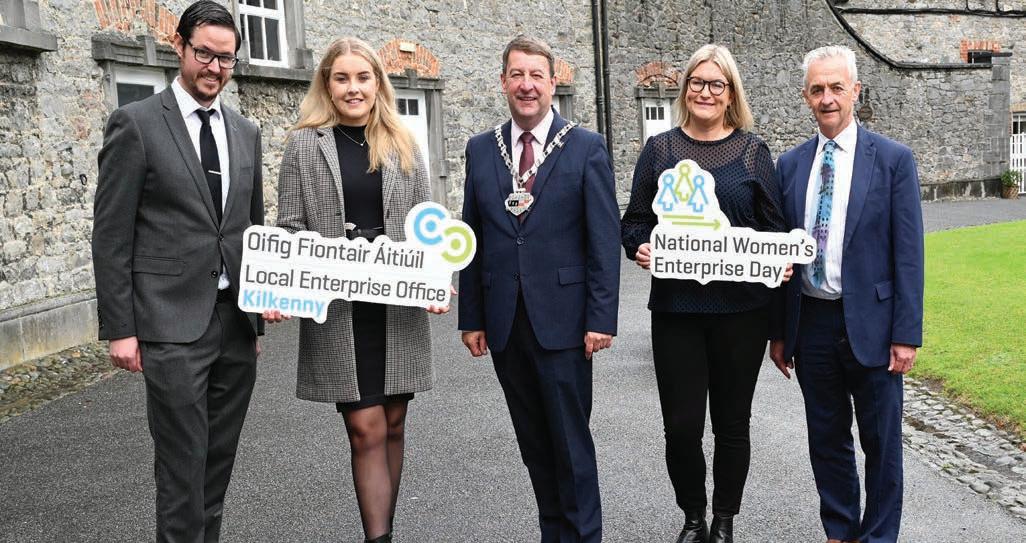
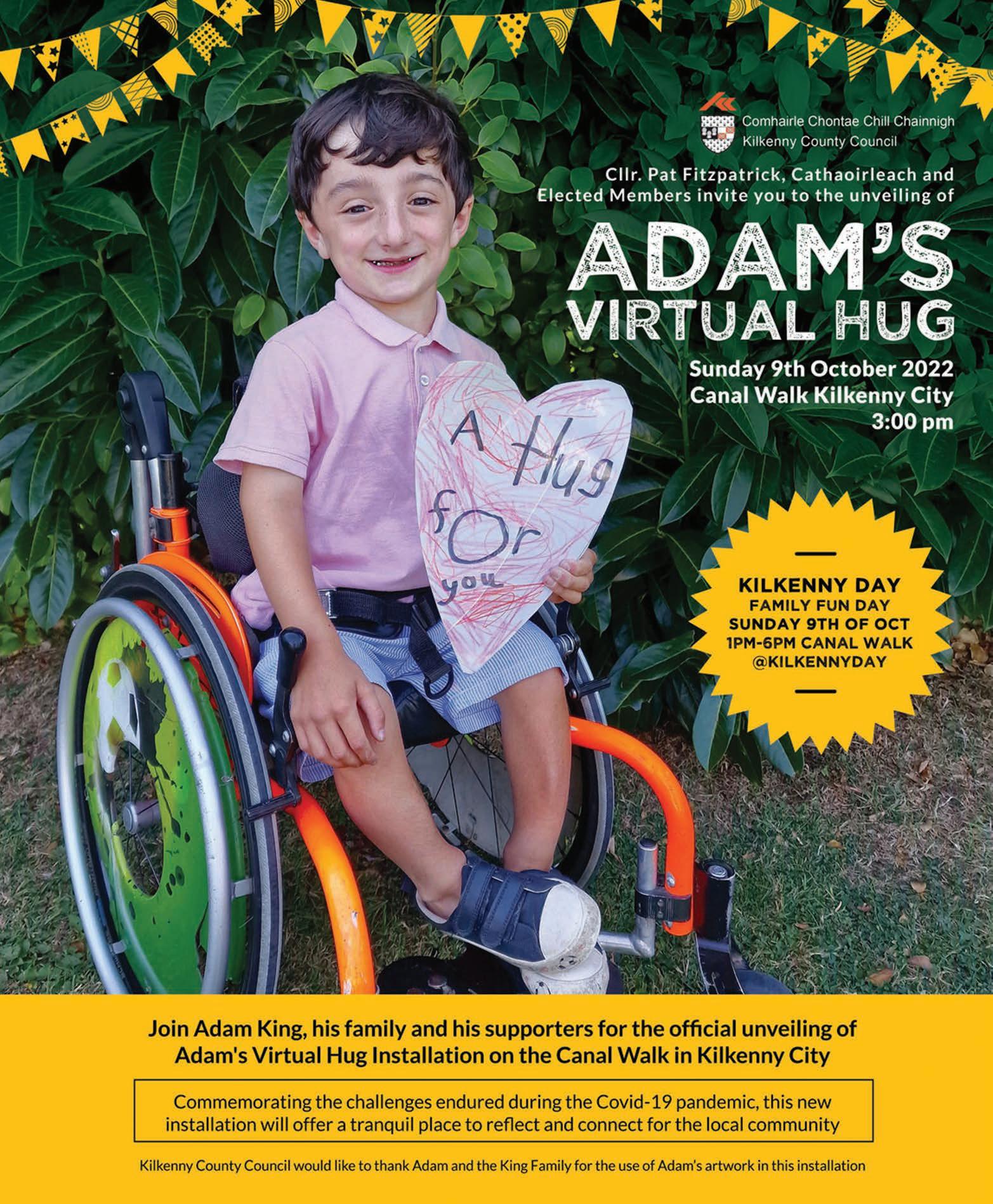
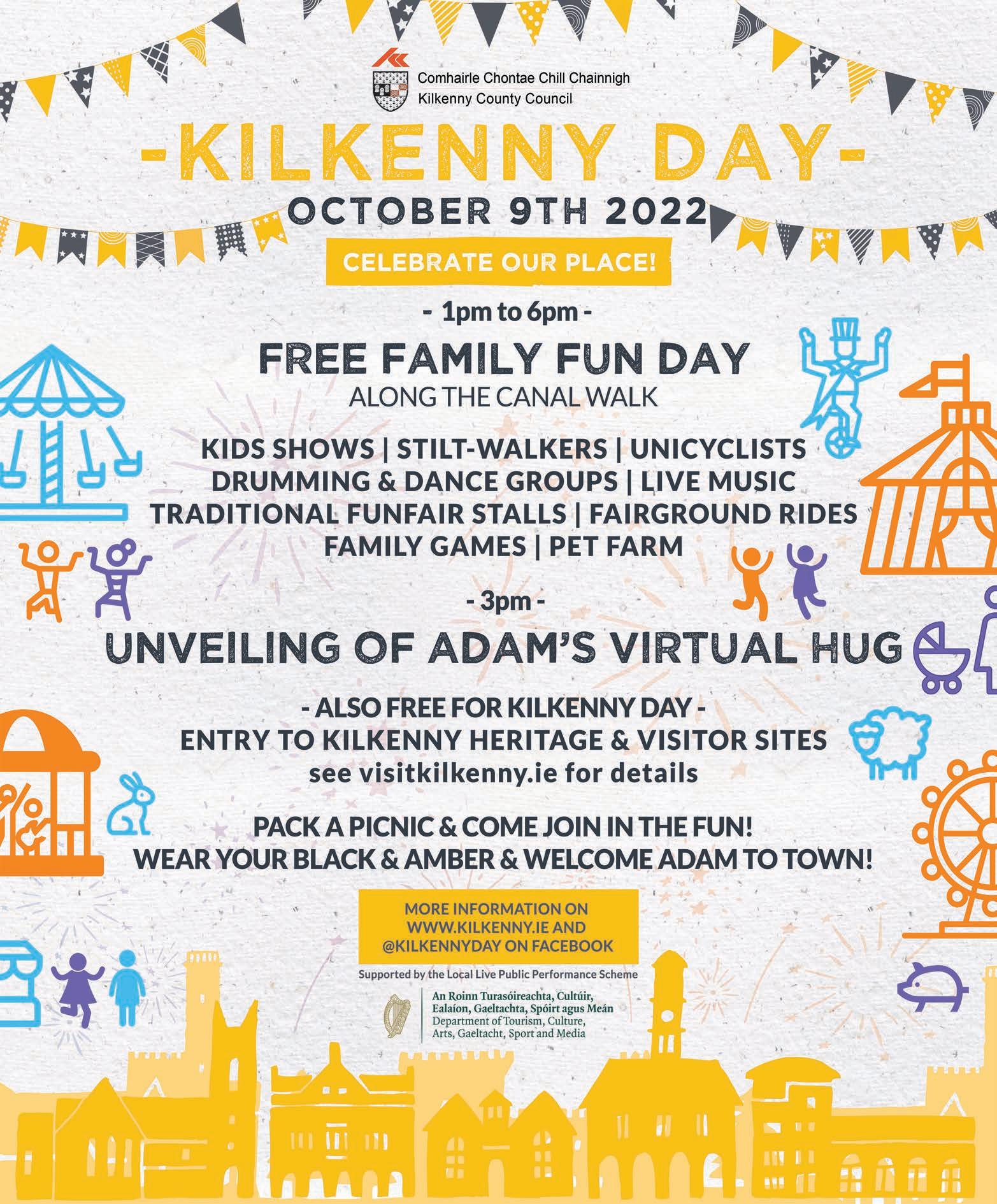
A year on, our electric vehicles power ahead
New car registrations for September were up 42.5% (6,340) when compared to September 2021 (4,449). Registrations year to date are up 0.7% (101,492) on the same period last year (100,745) and are 10.9% behind (113,945) that of pre-Covid levels, according to the Society of the Irish Motor Industry (SIMI).
Light Commercial vehicles (LCV) are up 6.5% (1,756) compared to September last year (1,649) and year to date are down 20.5% (20,974). HGV (Heavy Goods Vehicle) registrations are down 12.4% (197) in comparison to September 2021 (225). Year to date HGV’s are down 6.3% (2,120).
Used car imports for September (4,344) have seen a decrease of 12.4% on September 2021 (4,952). Year to date imports are down 26.8% (37,418) on 2021 (51,138).
For the month of September 1,858 new electric vehicles were registered compared to 770 in September 2021. So far this year 14,513 new electric cars have been registered in comparison to 7,819 on the same period 2021 an increase of 85.6%.
Electric Vehicle, Plug-in Hybrids and Hybrids continue to increase their market share, with a combined market share now of 40.76%. Petrol continues to remain dominant with 30.09%, Diesel accounts for 26.99%, Hybrid 19.67%, Electric 14.30% and Plug-in Electric Hybrid 6.79%.
Brian Cooke, Director General SIMI, said:
“ e early Budget, with no VRT increases and the extension of the EV grants for the rst half of next year, provides some stability in what is highly volatile retail environment, and will hopefully encourage car buyers into dealerships for the vital selling period between now and the end of the year.”
Farmers ‘note tax rules’ of live-in roles of employees

Ifac, Ireland’s farming, food and agribusiness specialist professional services rm, is reminding Kilkenny farmers of the tax implications of providing free or subsidised accommodation for their farm employees.
In the rst quarter of 2022, the national average monthly rents in Ireland were more than €1,500. Across the country, high rents along with a shortage of rental properties are making it increasingly di cult for employees to nd accommodation.
Concerning live-in roles, Declan McEvoy, Head of Tax at ifac, said: “High rents and a housing shortage mean that farmers who can provide free or subsidised accommodation enjoy an advantage in the current market when it comes to attracting and retaining agricultural employees.”

Bene t-in-kind
As with any employee bene t, when considering offering free or subsidised accommodation, it is important to understand the bene t-in-kind implications. Under Revenue rules, BIK on employee accommodation is calculated based on the annual market value of the rent plus any related expenses paid by the employer (such as light and heat).
While the employee is liable for PAYE, PRSI and USC on the bene t received, access to accommodation is very attractive in the current market and can compensate for lower wages in certain roles.
It is also important to be aware that for certain roles, accommodation provided by an employer may be exempt from BIK.
BIK exemption
Where an employee is required to live in accommodation on their employer’s premises to perform their duties, the provision of free accommodation may be exempt from BIK. Revenue guidance states that this requirement is usually met where: • e employee is required to be on call outside normal hours • e employee is actually frequently called out • e employer provided the accommodation so that the employee could access work quickly.
Other bene ts
You can provide various other tax-free bene ts to your employees. ese include: • Bicycles and safety equipment • Certain course and exam fees • Employer pension contributions to Revenue approved schemes • Small bene ts worth €500 or less that are not in cash form and are given to the employee once a year.
Remember, when hiring employees, it is important to agree on wages on a ‘gross’ rather than a ‘net’ basis, to avoid unforeseen costs if the employee’s tax status changes.
Retaining workers
Good employees are di cult to nd and expensive to replace so it is worth taking steps to ensure that you provide a good work environment. With the cost of living soaring and rental properties in short supply, free or subsidised accommodation is an attractive and valuable bene t.
Our volunteers at Foróige’s 50th!
Foróige volunteers from all over Ireland came together in the Tullamore Court Hotel in Co. O aly recently for Foróige’s annual volunteer conference. Minister Roderic O’Gorman was in attendance and spoke to volunteers, praising their continued e orts throughout the pandemic.
“Foróige volunteers have helped create communities that are vital to our society. e value of the contributions that are made by these volunteers cannot be overstated,” he said.
“Not only does volunteerism positively impact our communities but it can provide people with a sense of purpose, improving their own wellbeing, enhancing their empathy and allowing them to connect with young people in their communities. Foróige has to be commended for the innovative approach in involving young people in the decisions that impact their lives.”
is was the 50th annual Forage Volunteers Conference, with 120 delegates from 16 counties enjoying a wide variety of guest speakers, group discussions and social events aimed at exchanging ideas to continue Foróige volunteers’ impactful work throughout Ireland.
Dr David Coleman, clinical psychologist, broadcaster and author was the keynote speaker at the conference and gave his insights into how to communicate with and help teenagers tackle the problems they’re facing in their lives.
Foróige celebrated its 70th year anniversary with the rst Club meeting in Mooncoin on 14th March 1952. Foróige now has over 5,500 volunteers working in its 550 clubs, 150 projects and programmes, including Leadership for Life; Be Healthy Be Happy, the Network for Teaching Entrepreneurship (NFTE), and Big Brother Big Sister.
Slainte! Raise a glass to ‘Sober October’
Turn2Me, a national mental health charity, is encouraging Kilkenny people to get involved in ‘Sober October’ and to quit drinking for the month. e charity said it’s a great time to re ect on your alcohol consumption and your relationship with alcohol. e charity stated that alcohol can make anxiety and depression worse, it can reduce sleep quality, and it can heighten stress levels.
“Reducing or cutting out alcohol can improve our mental health,” Fiona O’Malley, CEO of Turn2Me, said. “Alcohol is a depressant. Our moods can signi cantly improve when we reduce or stop drinking entirely. Setting yourself a challenge of giving up alcohol for a month can help you adapt a healthier lifestyle. It can make us re ect on how many alcohol units we consume, on average, every week and month, and it can also make us analyse our relationship with alcohol. Many people use alcohol as a social crutch, and they can start to rely on it in stressful or awkward situations.
“Nowadays, so many people decide to not drink at all, or not as much, on a night out thanks to so many alcoholfree alternatives. A monthlong challenge like Sober October can make us consider how reliant we are on alcohol, why we consume alcohol, and how much happier we feel when we don’t drink as much or at all.”
Turn2Me is encouraging anyone who is feeling anxious, depressed, or going through a period of grief to sign up to their free one-to-one counselling sessions or their free support groups, available on the Turn2Me website, Turn2Me.ie

And the band played on…
BY JOHN FITZGERALD
For more than a century, the men and women of St. Patrick’s Brass Band promoted all that was best in Kilkenny’s musical traditions. From the day it was founded in May 1882, it won its way into the hearts of young and old in Cat County. e band’s motto, inscribed on a promotional banner, was “To God and Ireland True.”
It honoured this commitment in style. It entertained at hurling and football matches, led religious processions, and made a point of commemorating emotionally charged political anniversaries, even when the authorities o cially banned these. e band played rousing military marches that stirred up patriotic fervour in Kilkenny in the heady days of political turmoil that marked the rst two decades of the 20th century. After independence, it performed in a di erent atmosphere and more relaxed political climate.
Its much loved formation of bandsmen and stunning majorettes, marching in step with impeccable precision and choreography, brought joy to countless thousands of people in the county and other parts of Ireland.
No major outdoor-festive occasion would have been the same without it. At the beer festival in the sixties and seventies, it proved every bit as competent as the Bavarian band that roused the spirits of drinkers.
St. Patrick’s Band complemented the Germanic airs with good old Kilkenny band music as locals and visitors sang along with their two pint glasses of ale that the smiling maidens lovingly handed down to them in the beer tents.
At a funeral, it could be relied on to strike appropriate notes of devotion, honour and respect to give the dearly departed a memorable sendo . e sound of St. Patrick’s band was special music to the ears of Kilkenny hurlers setting o to do battle in Croke Park and other sporting venues. Hearts uttered proudly when it played the Rose of Mooncoin before a match or to welcome the team back home to Kilkenny.
A Rebel Band
The band was born in “The Village”, the name given by Kilkenny folk to St. Patrick’s Parish. Among the first subscribers to the band was Martin Coyne of Upper Patrick Street. His gesture of placing a few shillings on a blacksmith’s anvil in The Village was fondly remembered for decades afterwards. It was the day the band members knew their musical venture had a future.
“Sure it’ll keep ye going for a while”, Martin predicted reassuringly.
The band’s first high profile engagement was the funeral in August 1882 of writer and Fenian, Charles Kickham. It led the cortege across the city as far as the Callan road, and a few days later travelled to Kickham’s native Mullinahone for the burial. As the coffin was lowered into the earth, the band played God Save Ireland and a Nation Once Again.
A few months after its formation, the band became embroiled in the political turmoil of pre-independence Ireland. Its president, Pat Hartigan, was the son of prominent Fenian leader, John Hartigan.
On November 23rd, 1882, it led a big procession through Kilkenny to honour the anniversary of the Manchester Martyrs, three Irishmen who had been hanged in 1867 for an alleged murder.
This event passed off without incident, but the following year a police notice banned a similar parade. Constables were instructed to be especially on guard against any attempt by St. Patrick’s band to play rebel music.
In defiance of the ban, thousands of people thronged the streets of Kilkenny as darkness approached. Crowds of cheering citizens shuffled down Rose Inn Street and along John’s Quay.
Police rushed to the banks of the River Nore with batons drawn as flares lit up the water to reveal a line of boats tied together. These craft contained all the members of the illusive band and their instruments.
The constables roared at the men in the boats to surrender, to no avail. The band struck up a tune that had people cheering, whistling and singing, drowning out the police commands to call off the unlawful assembly... (Picture shows: the band in about 1900. Standing: John Walsh, Tommy Dunne, Tommy Nolan, Pat Corcoran, Jack Carroll, Tom Egan, Brian Fogerty, Mick Walsh, Tommy Meighan. Seated: Pat Devlan, Jack Fahy, Tommy Haide, Jack Holland (coductor), Paddy Cahill, and Joe Cahill.
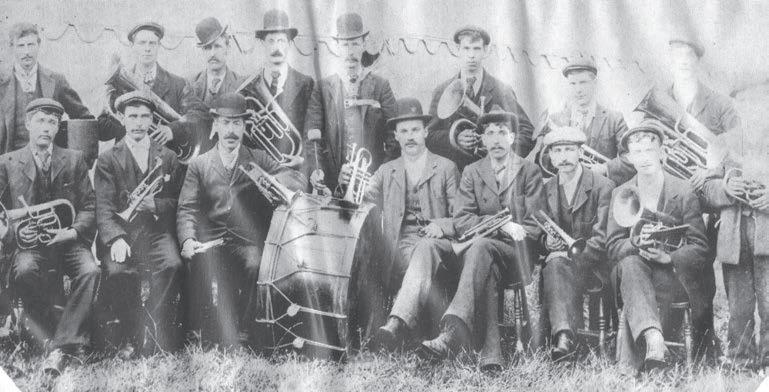
-John Fitzgerald
To be continued…
New online facility for booking birth and death registrations
A new online facility to book appointments for the registration of births and deaths is now in place. e HSE Civil Registration Service registers all births, deaths and marriages in Ireland (and carries out civil marriage registrations). ere are 11 full and part time Civil Registration Service o ces across the South East. e new system (similar to booking online for vacciantion appointments) is available per https:// www2.hse.ie/services/ births-deaths-and-marriages/ nd-a-civil-registration-service/ Online booking will enable members of the public across counties Carlow, Kilkenny, South Tipperary, Waterford and Wexford to book a birth or death registration appointments online for a date and time that they choose at Civil Registration o ces in Carrick-on-Suir, Cashel, Carlow, Clonmel, Dungarvan, Enniscorthy, Kilkenny, New Ross, Tipperary Town, Waterford and Wexford.
Registration of Births
For information on the registration of births, see https://www2.hse.ie/services/births-deaths-andmarriages/register/birth/ e new online appointment system will enable parents to book a birth registration appointment online for a date and time that they choose. Whereas Civil Registration O ces will continue to operate as normal (including for registration of marriages and as regards availability by phone for enquiry), the online appointment process will make it quicker and easier for parents to organise their registration appointment at a time and date that works for them. Appointments can also be easily cancelled with the click of a button.
Registration of Deaths
For information on the registration of deaths, see https://www2.hse.ie/services/births-deaths-andmarriages/register/death/ e new online appointment system will enable anyone who needs to register a death to arrange an appointment online for a date and time that they choose. Civil Registration Of ces continue to operate normal opening times (for further information and contact details, see https://www2.hse.ie/ services/births-deathsand-marriages/ nd-acivil-registration-service/) but the online appointment process will make it quicker and easier to organise death registration appointments at a time and date that works for the person requiring the service. Appointments can also be easily cancelled with the click of a button.
Every year there are days to mark special world wide events. Days celebating Seniors, Our Mother Tongue day, Teacher’s day and of course the one everyone celebrates is Mother’s Day. September 21st every year is ‘World Peace Day’.
To mark this day the Twilight CEO Murty Brennan spoke to the gathering at the annual Peace Convention event held in Tipperary.
Our Twilight Youth Inclusion group, which has members from Kilkenny’s diverse communities went one step further. is progressive and expanding youth group is becoming a very popular youth club which now has a waiting list for membership. TYI o er excellent services for ages 13 to 17-year olds which includes European travel through the Erasmus + Programme. TYI group is currently researching a trip to Hungary in 2023.
In recent weeks the club has travelled to the Dunmore East adventure centre and Splash word and took part in personal development days back at the current base in the Twilight International Cultural House.
To Mark International Day of Peace 2022 and as the theme of Peace is “End racism. Build peace.” Our Twilight Youth Inclusion Group made Origami Peace Cranes in honour of this day. e Team leaders, Leah Mc’Donnell and Liam Mungovan, must be complimented for the progressive ideas and have plans set out till the end of 2022 and working on their 2023 activities
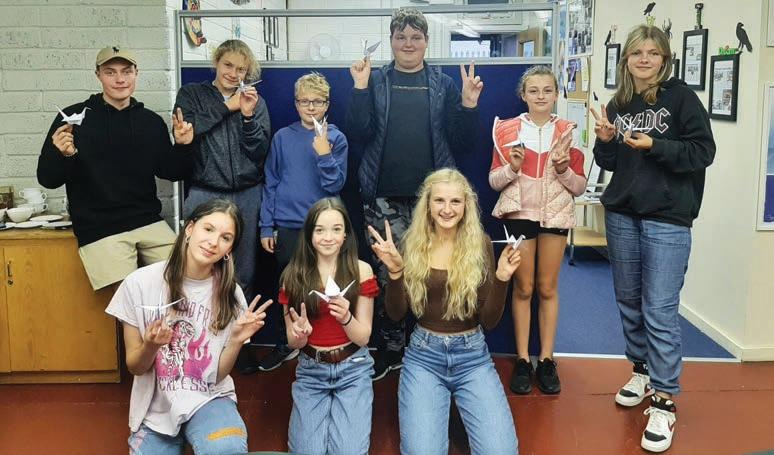
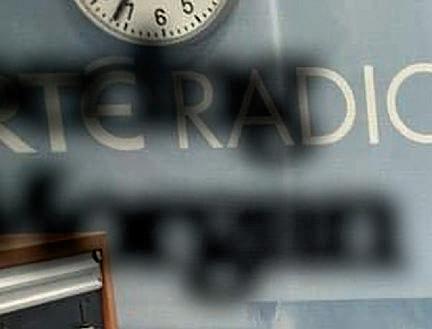

Remembering Dermot Morgan

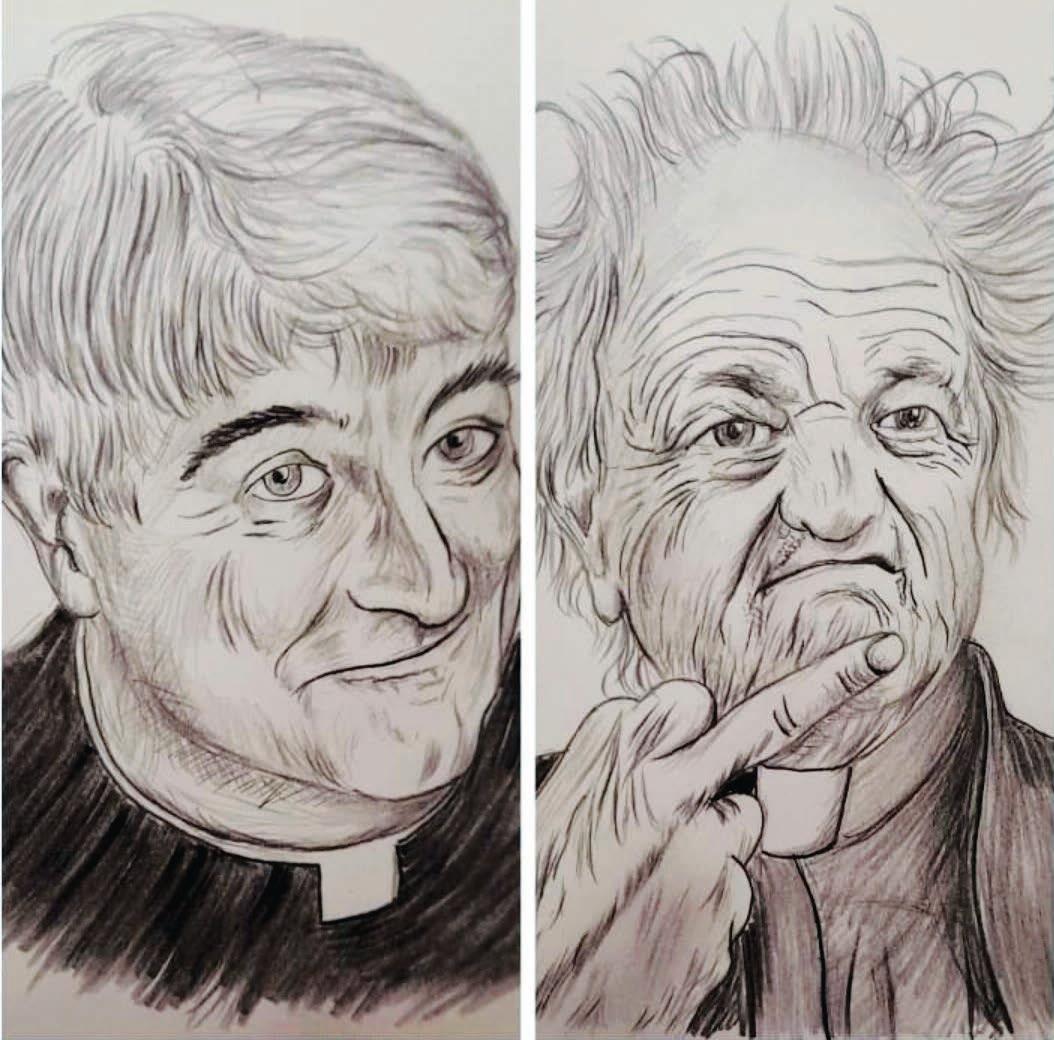
By Fred Tuite is week, e Kilkenny Observer Newspaper caught up with Kilkenny resident Fred Tuite as he reminisced about the late writer and actor Dermot Morgan.
In October 1972, I returned for my second year to UCD to nd the Bel eld Arts Block lled with new rst year students trying to nd their way about. Making my way through this excited crowd, I met a friend coming the other way. “Come with me” she said. And so, I followed her into eatre L, that huge amphitheatre lecture hall crowded with expectant rst year students for their rst lecture in English. e lecturer, a lanky gure with a shock of black hair, in priestly garb, came and took his place on the podium. A hush descended on the packed hall.
“Good morning students, I’m Father Michael Paul Gallagher and these lectures will be on Practical Criticism”.
“But that’s not Michael Paul Gallagher!” I whispered to my companion.
She put her nger to her lips and motioned for me to listen on.
“Ah yes,” he continued, “Practical Criticism. I recall a student who went to Professor Donohue saying, ‘I have Practically Criticised this poem’. ‘Yes’, he replied, ‘practically, but not quite’. But at the end of this course, you will gain new insights into poetry, new visions and understanding.
You will look at a poem like “Humpty Dumpty sat on a wall, Humpty Dumpty had a great fall, All the Kings Horses and All the King’s Men, couldn’t put Humpty together again”, and you will see this not as a nursery rhyme but as an existentialist exploration of the situation of modern man fallen from grace and searching for meaning in an absurd world…”
Will the real Fr. Michael please stand up.
“Who are you?” said a bearded clerical figure who’d now arrived at the podium.
“I’m Father Michael Paul Gallagher” the lecturer replied.
“No, I’m Father Michael Paul Gallagher!”
“Right, sorry!” the imposter cried, and off he ran to the cheers and groans of the first-year students.
We caught up with him outside. He was flushed and excited from his act and keen to know how we thought it had gone. This was my first encounter with Dermot Morgan, second year student and all-round funny guy. We became good friends, and as we were both doing English, we saw a lot of each other. I was thoroughly entertained by him on every meeting, for he never stopped performing whether on stage or with company. His energy was manic and his comments hilarious and apt. He was liable to turn up anywhere and everywhere, in the guise of his latest character. He even showed up at the Tramps’ Ball in the Restaurant Building fronting a band called Big Gom and the Imbeciles. But he had to give up that act, he told me, as people were taking it too seriously and missing the satire, wanting to book the group for dances, while all he wanted to do was poke fun at the country music scene with songs like “Castleblaney Blues”, “I walk Blacklion” or “Be nobody’s darling but wine”
After college we drifted apart, but I followed his comedy career through his letters to the early morning Mike Murphy radio show, and on to “The Live Mike” on television –where Father Brian Trendy, his next priestly incarnation, appeared.
This was an altogether smoother priestly character, well-groomed in his leather jacket smiling at the camera as he gave us his little bit of religion. He advised us to be like the Irish soccer team and “Pick Devine”, or act as a fishing rod for God to catch a sole and fillet with love.
But again, there was the danger that his bite-sized pieces of religion were taken for real and my mother, for one, loved his little sermons.
A bit of a Charlie
His next incarnation was as the growling, irritated voice of Charley Haughey in his own radio show Scrap Saturday, with Gerry Stembridge. This was full of cutting impersonation and biting political satire that to me represents the height of his career. Maybe it was too close to the bone as after a few seasons Scrap Saturday was scrapped.
He went on to play his third and most famous priestly role, Father Ted, and gain international fame. Father Ted Crilly dreams of bigger things then the deadend wilderness of Craggy Island, a parish to match his abilities, recognition, fame and fortune. But everywhere his projects crumble under the reality of the people he is surrounded with. It was a wonderful farce, extremely well written and well-acted by a fantastic cast. But I kept thinking that for all its quality Dermot Morgan has so much comic ability underused in the series.
The last time I met him was in Kilkenny when he was on a solo tour called Black Magic. He’d been in the news recently having appeared in court and been fined for speeding through Mountrath in County Laois. His comment to the audience on this was as acerbic as ever.
“Did you ever see Mountrath?” he thundered, “Fifty miles is too bloody slow to go through the place!”
We met and talked after the show, but he had to return to Dublin early and promised a real UCD reunion at a future time.
Died at the height of his fame
That reunion never happened, and he died at the height of his fame playing the vainglorious Fr. Ted. He never lost the manic energy and enthusiasm he showed in Belfield, where he constantly had us all in fits of laughter with his antics. While the world got to know and love him as the farcical Fr. Ted, it was in UCD in front of those bemused and bewildered first years that he played the first of those oddball priests that were to bring him so much fame.
“Ah yes,” he continued,
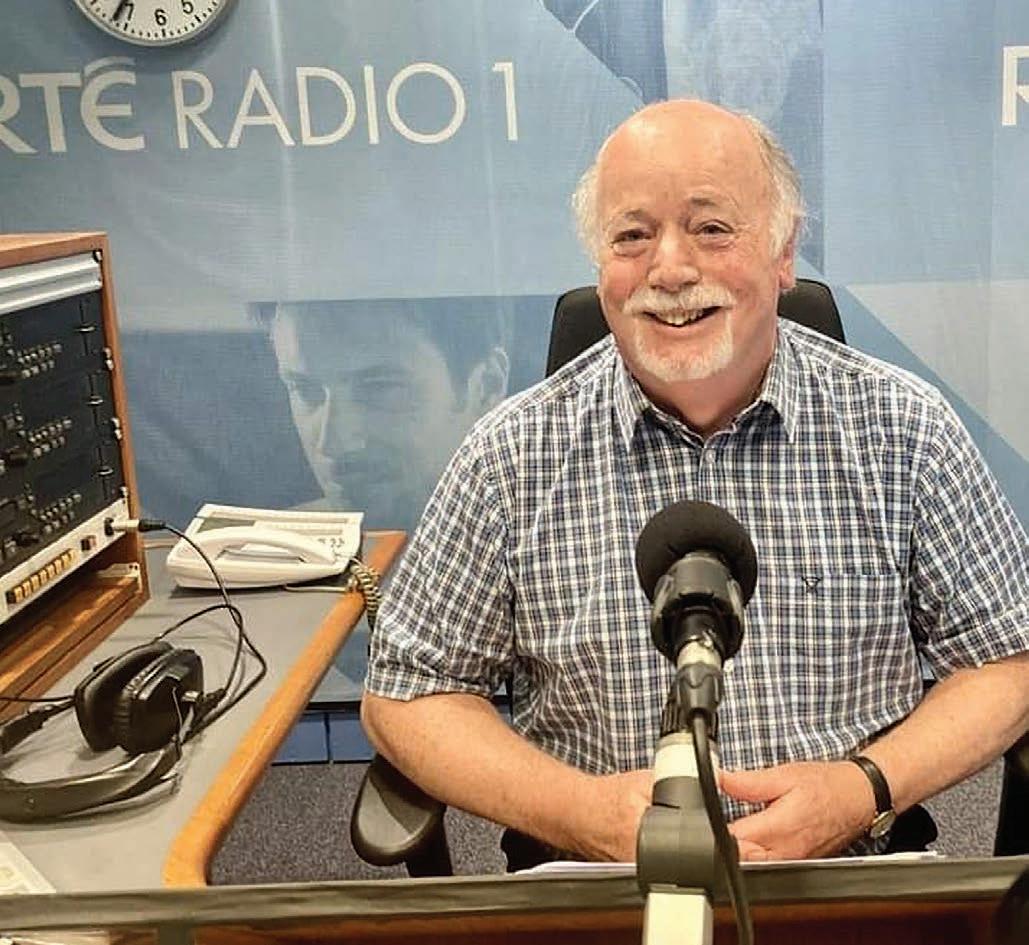
Fred Tuite is a retired Guidance Counsellor living in Kilkenny. Along with some private work he edits the Guidance Counsellors’ journal Guideline and is very involved in the Alliance Française in Kilkenny. This text was broadcast on RTE Sunday Miscellany on Sunday 25th October 2023.

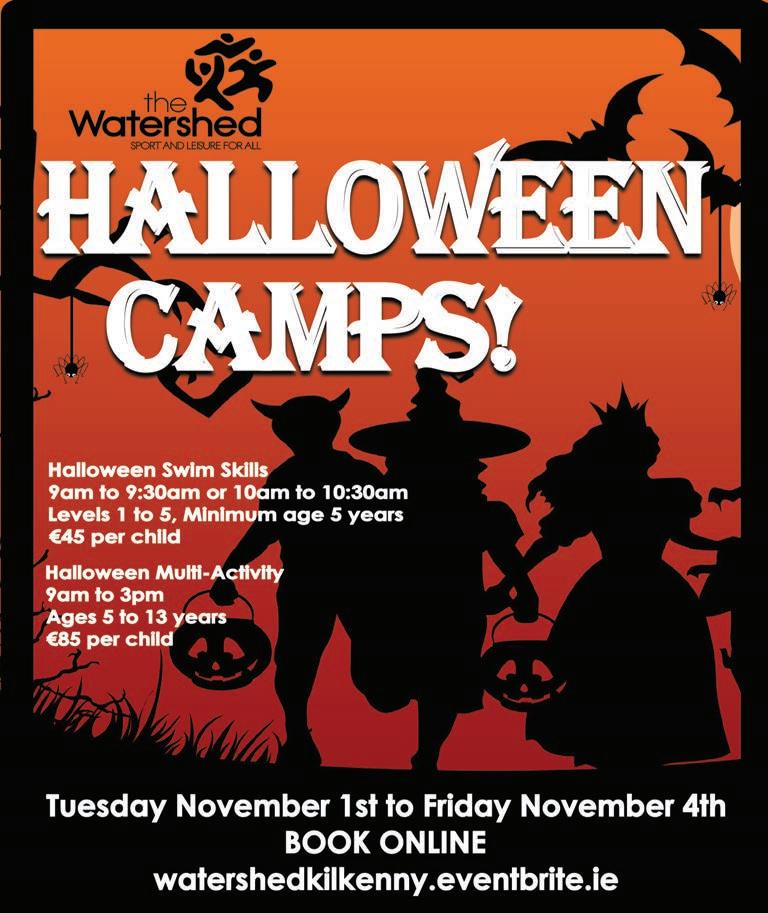
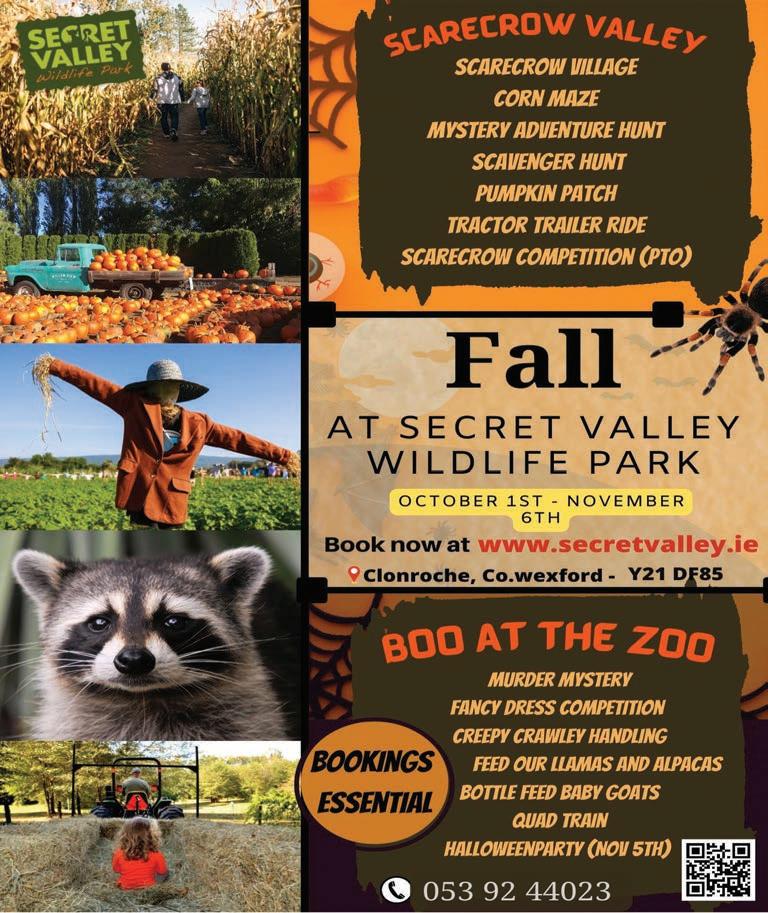
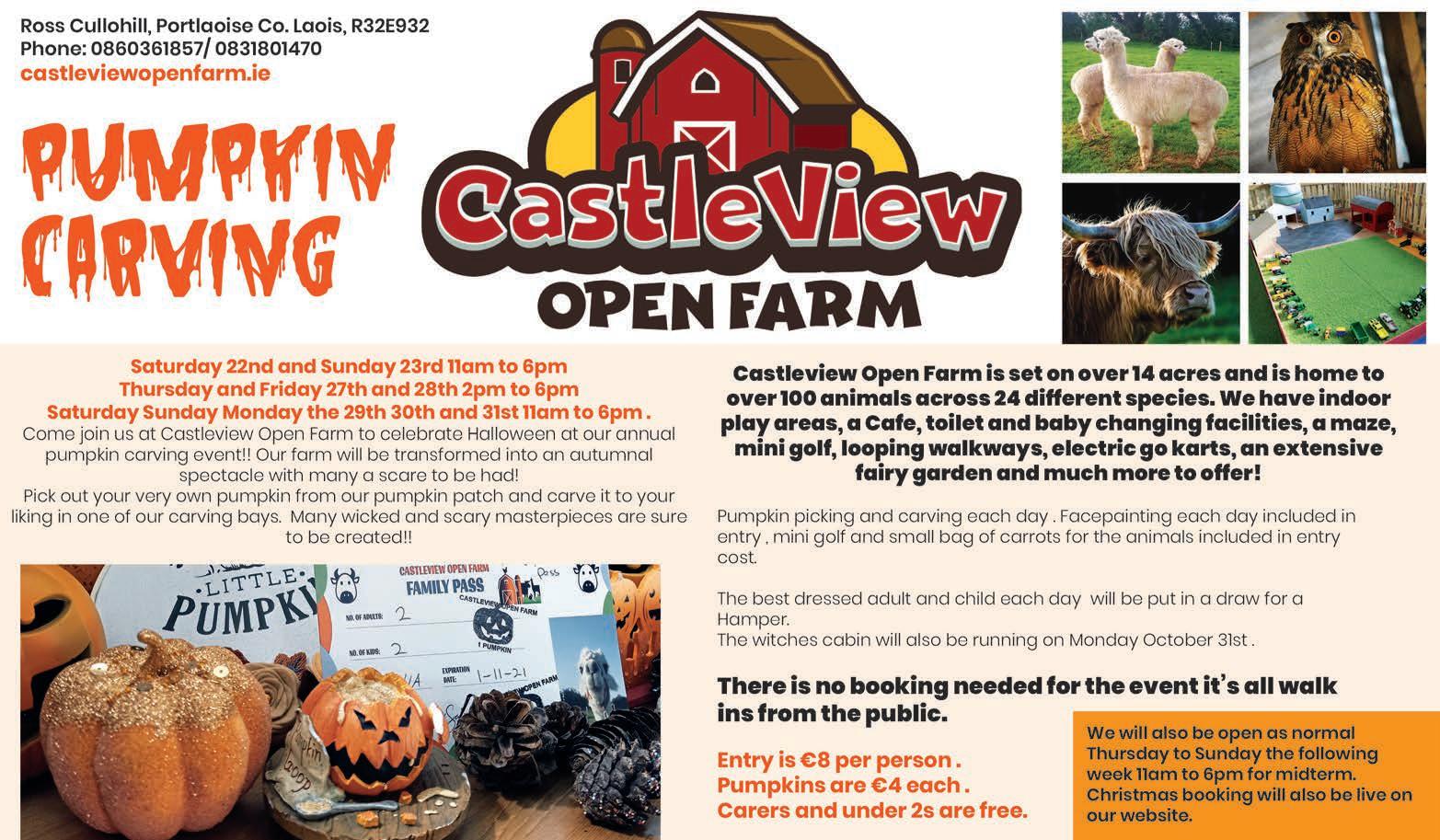
Kilkenny Day 2022
Kilkenny Heritage Sites open their doors for free on Kilkenny Day
To celebrate our county on Kilkenny Day 2022 many of Kilkenny’s historical sites and visitor experiences will open their doors free-of-charge for all to explore and enjoy on the day.
Kilkenny’s foundation began with an early 6th-century ecclesiastical settlement, with a church built in honour of Kilkenny Day’s patron Saint, St. Canice, now St Canice’s Cathedral.
Director of Services of Kilkenny County Council Tim Butler commented “Kilkenny Day is a great opportunity for people to get out into the city and county to see somewhere they have never experienced before and re-visit a venue they love.”
Cathaoirleach of Kilkenny County Council, Cllr. Pat Fitzpatrick said “Kilkenny County Council wish to extend a warm invite to Kilkenny people to get out and celebrate our place on Sunday 9th October for Kilkenny Day. We are incredibly lucky to have such historic and beautiful places in Kilkenny city and county, and many people from Kilkenny have never visited these places. Now is their chance to put that right.”
People can learn about Castlecomer’s Coal Mining history in the Discovery Park, roam monastic ruins at omastown’s Jerpoint Abbey, and pick up some mouth-blown glass pieces at Jerpoint Glass Studio. ey can step back in time by visiting Duiske Abbey in Graiguenamanagh and experience the restored Victorian Gardens at Woodstock, Inistioge. ey can also visit Ionad Lachtaín, Freshford which hosts a local heritage museum and an exhibition of work by local artists.
A number of Kilkenny Fire and Rescue Service re stations will be open to the public on Kilkenny Day for everyone to see and experience. Fire stations in Kilkenny City, Freshford, Urlingford, omastown, Callan and Graiguenamanagh will be open from 1pm to 5pm, and the re station in Castlecomer will be open 2pm to 5pm.
Mayor of Kilkenny, Cllr. David Fitzgerald said that the city will be an open house when it comes to visitor attractions next Sunday.
“Kilkenny is steeped in history and its memorable landmarks and heritage sites draw visitors from all over the world. In the heart of our compact city centre there are many must see landmarks & experiences. People can take a tour in Kilkenny Castle, experience the incredible architecture at St Canice’s Cathedral and visit the secret garden at Rothe House, all within a milelong stroll of each other. We are hugely proud of that heritage and urge local citizens to grab this opportunity to get to know the city better, while celebrating all the best of being from Kilkenny.
General Manager of Rothe House, Valerie O’ Sullivan said “We are delighted to support Kilkenny Day again this year. As one of the key attractions on Kilkenny’s Medieval Mile, Rothe House is a place steeped in heritage and history. Admission to the house and gardens is free from 1pm – 4pm on Kilkenny Day and we look forward to welcoming lots of local families, some of whom might not have visited us before.”
People can explore 800 years of History at the Medieval Mile Museum followed by a short stroll to MacDonagh Junction for the Famine Experience or pop into the newly renovated Smithwick’s Experience and try Ireland’s most popular ale.
With free entry on Kilkenny Day to must-see sites and experiences, there’s something for everyone. For full details of locations, terms and conditions check out www.visitkilkenny.ie.
Fire Stations throw their doors open for Kilkenny Day
Kilkenny Day 2022 will o er a unique opportunity to local residents to visit their local re station and to interact with members of this crucial critical service. Children and adults will get an opportunity to see re service personnel at work and to see the sophisticated equipment the service uses up close in a relaxed environment, while providing valuable feedback to the service also.
A number of Kilkenny Fire and Rescue Service re stations will be open to the public on Kilkenny Day for everyone to see and experience. Fire stations in Kilkenny City, Freshford, Urlingford, omastown, Callan and Graiguenamanagh will be open from 1pm to 5pm, and the re station in Castlecomer will be open 2pm to 5pm.
Chief Fire O cer John Collins said “Kilkenny Fire and Rescue Service will be opening their doors to everyone in the community to come along to visit the Fire Stations as part of Kilkenny Day. Kilkenny Fire and Rescue Service re stations are part of their local community and we want people to come along and get to know their local re ghters, see their life-saving equipment in action and learn about re safety. Kilkenny Day is a great opportunity to learn more about how the re service serves the public and for the public in turn to give us some vital feedback about what more we can do to help them. We hope that local residents will come along and enjoy the Open Day in their local re station.
Our full-time and reserve re ghters have very strong links with their local community but the public rarely get to see them outside of the emergency situations in which they respond to emergency calls, day and night. In the ,more relaxed atmosphere of this Open Day, they will be able to explain their work and seek to deepen the connection with their neighbours. ”
